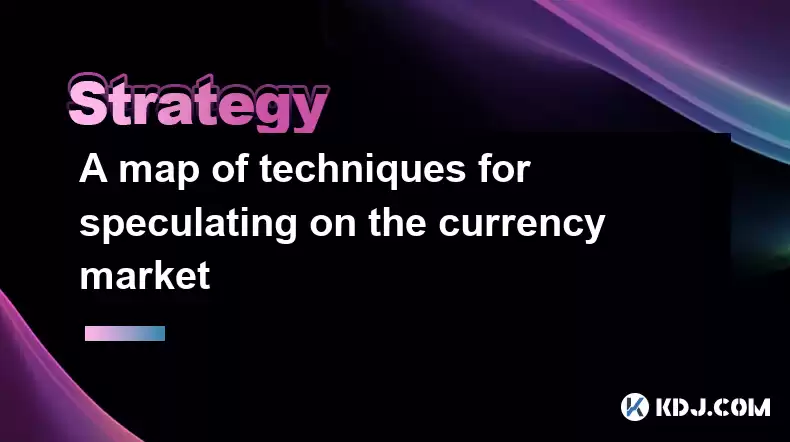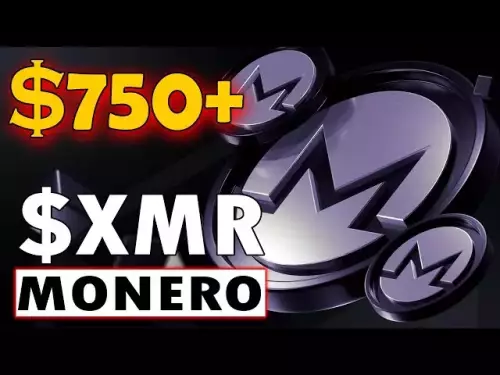-
 bitcoin
bitcoin $107208.295278 USD
-1.54% -
 ethereum
ethereum $3874.629914 USD
-1.38% -
 tether
tether $1.000440 USD
0.03% -
 bnb
bnb $1089.465513 USD
-5.53% -
 xrp
xrp $2.327672 USD
-1.65% -
 solana
solana $184.766505 USD
-0.73% -
 usd-coin
usd-coin $1.000076 USD
0.02% -
 tron
tron $0.310632 USD
-1.99% -
 dogecoin
dogecoin $0.187615 USD
-1.60% -
 cardano
cardano $0.633389 USD
-2.75% -
 ethena-usde
ethena-usde $0.999553 USD
0.03% -
 hyperliquid
hyperliquid $35.608231 USD
-4.13% -
 chainlink
chainlink $16.876114 USD
-3.98% -
 stellar
stellar $0.312239 USD
-0.91% -
 bitcoin-cash
bitcoin-cash $473.262969 USD
-7.09%
A map of techniques for speculating on the currency market
By deploying advanced charting tools, AI algorithms, and employing risk management strategies, cryptocurrency traders can enhance their trading accuracy and maximize potential returns.
Jan 08, 2025 at 10:45 pm

- Understanding market trends and technical analysis
- Identifying and executing profitable trading strategies
- Managing risk and maximizing returns in cryptocurrency trading
- Utilizing advanced charting tools and indicators
- Employing AI and machine learning for automated trading
- Identify overall market trends by analyzing price charts, volume, and other indicators.
- Use technical analysis tools such as moving averages, support and resistance levels, and candlestick patterns to predict future price movements.
- Monitor market news and updates to stay abreast of factors influencing cryptocurrency prices.
- Develop specific trading strategies based on technical analysis, market sentiment, and risk tolerance.
- Implement scalping, day trading, or swing trading strategies to capitalize on short-term or long-term price fluctuations.
- Execute trades using limit orders, market orders, and stop-loss orders to manage risk and maximize profit potential.
- Define risk parameters and maintain a risk-reward ratio to minimize losses.
- Utilize position sizing and leverage cautiously to maximize profits while controlling risk.
- Diversify cryptocurrency holdings across different assets to reduce overall market exposure.
- Employ charting software with advanced technical indicators, such as moving average convergence divergence (MACD), relative strength index (RSI), and Bollinger Bands®.
- Use these indicators to identify overbought and oversold conditions, momentum, and potential trading opportunities.
- Customize chart settings and indicators to suit individual trading preferences and strategies.
- Leverage artificial intelligence (AI) and machine learning (ML) algorithms to automate trading strategies.
- Program algorithms to analyze market data, identify patterns, and execute trades based on predetermined criteria.
- Optimize algorithms using backtesting and parameter tuning to improve performance.
The best cryptocurrency trading strategies depend on individual risk tolerance, time horizon, and market analysis skills. Common strategies include scalping, day trading, swing trading, and long-term hold positions.
How to manage risk in cryptocurrency trading?Managing risk in cryptocurrency trading involves defining risk parameters, using position sizing and leverage cautiously, and diversifying holdings across different assets. Employing stop-loss orders and trailing stops can help limit losses.
What are the essential cryptocurrency trading tools?Essential cryptocurrency trading tools include charting software with technical indicators, data feeds, news updates, and order execution platforms. Consider using AI and ML-based tools for automated trading strategies.
How to avoid common cryptocurrency trading mistakes?Common cryptocurrency trading mistakes include overtrading, chasing losses, and ignoring risk management. Avoid emotional decision-making, stick to a trading plan, and continuously educate oneself on market trends and trading techniques.
What are the differences between scalping, day trading, and swing trading?Scalping involves executing multiple small trades within a short time frame, day trading involves closing all positions within the same trading day, and swing trading holds positions for days or weeks to profit from larger price swings.
Disclaimer:info@kdj.com
The information provided is not trading advice. kdj.com does not assume any responsibility for any investments made based on the information provided in this article. Cryptocurrencies are highly volatile and it is highly recommended that you invest with caution after thorough research!
If you believe that the content used on this website infringes your copyright, please contact us immediately (info@kdj.com) and we will delete it promptly.
- Eggman, Pepecoin, and Price Retraces: A Meme Coin Evolution?
- 2025-10-19 04:25:15
- Pepe, Floki, and the Meme Coin Mania: What's the Hype?
- 2025-10-19 04:25:15
- Eggman, Memecoin Mania, and SPX6900: What's Next in Crypto?
- 2025-10-19 04:30:11
- Abu Dhabi Fund, Aster, and the Fact-Check Frenzy: What's Real?
- 2025-10-19 04:30:11
- Memecoins in October 2025: Riding the Hype Wave
- 2025-10-19 04:35:11
- Pepe Price, DeepSnitch AI, and Presale Gains: Navigating the Meme Coin Mania
- 2025-10-19 04:35:11
Related knowledge

Practical parameter settings for a Bitcoin multi-timeframe moving average system
Sep 18,2025 at 10:54pm
Optimizing Timeframe Combinations for Bitcoin Trading1. Selecting appropriate timeframes is crucial when building a multi-timeframe moving average sys...

How can I filter out false breakouts in Dogecoin high-frequency trading?
Sep 22,2025 at 01:00am
Understanding False Breakouts in Dogecoin Trading1. A false breakout occurs when Dogecoin's price appears to move beyond a defined support or resistan...

Techniques for identifying tops and bottoms in the Bitcoin on-chain NVT model
Sep 20,2025 at 07:54pm
Understanding the NVT Model in Bitcoin Analysis1. The Network Value to Transactions (NVT) ratio is often described as the 'P/E ratio' of the cryptocur...

What does the surge in open interest in Bitcoincoin futures mean?
Sep 20,2025 at 11:18pm
Understanding the Surge in Dogecoin Futures Open Interest1. A surge in open interest within Dogecoin futures indicates a growing number of active cont...

How can I use the Ethereum USDT premium to gauge market sentiment?
Sep 18,2025 at 11:55pm
Understanding the Ethereum USDT Premium1. The Ethereum USDT premium refers to the price difference between USDT (Tether) traded on Ethereum-based plat...

What should I do if Ethereum staking yields decline?
Sep 20,2025 at 06:18am
Understanding the Causes Behind Declining Ethereum Staking Yields1. The Ethereum network transitioned to a proof-of-stake consensus mechanism with the...

Practical parameter settings for a Bitcoin multi-timeframe moving average system
Sep 18,2025 at 10:54pm
Optimizing Timeframe Combinations for Bitcoin Trading1. Selecting appropriate timeframes is crucial when building a multi-timeframe moving average sys...

How can I filter out false breakouts in Dogecoin high-frequency trading?
Sep 22,2025 at 01:00am
Understanding False Breakouts in Dogecoin Trading1. A false breakout occurs when Dogecoin's price appears to move beyond a defined support or resistan...

Techniques for identifying tops and bottoms in the Bitcoin on-chain NVT model
Sep 20,2025 at 07:54pm
Understanding the NVT Model in Bitcoin Analysis1. The Network Value to Transactions (NVT) ratio is often described as the 'P/E ratio' of the cryptocur...

What does the surge in open interest in Bitcoincoin futures mean?
Sep 20,2025 at 11:18pm
Understanding the Surge in Dogecoin Futures Open Interest1. A surge in open interest within Dogecoin futures indicates a growing number of active cont...

How can I use the Ethereum USDT premium to gauge market sentiment?
Sep 18,2025 at 11:55pm
Understanding the Ethereum USDT Premium1. The Ethereum USDT premium refers to the price difference between USDT (Tether) traded on Ethereum-based plat...

What should I do if Ethereum staking yields decline?
Sep 20,2025 at 06:18am
Understanding the Causes Behind Declining Ethereum Staking Yields1. The Ethereum network transitioned to a proof-of-stake consensus mechanism with the...
See all articles










































































